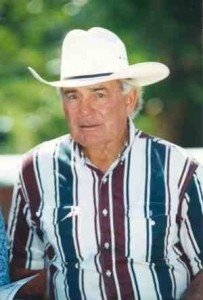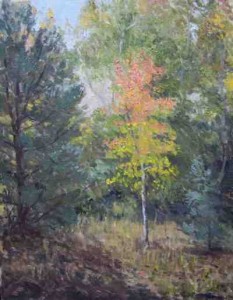Review by Ed Quillen
Colorado History – November 2006 – Colorado Central Magazine
Roadside History of Colorado
by Candy Moulton
Published in 2006 by Mountain Press
ISBN 0-87842-520-9
DO NOT CONFUSE THIS BOOK with Roadside Geology of Colorado, which comes from the same publisher. Roadside Geology is a fine book, as accurate as it can be within its limitations as a general guide and written with clarity for the non-geologist who’s curious about the countryside. Roadside History, on the other hand, is a collection featuring sloppy writing, inconsistent inclusions and exclusions, and inaccuracies on almost every page.
Before we get to this book’s flaws, though, I’ll note that Roadside History is reasonably well organized, dividing our state into six sections, and following major highways from west to east, or south to north (the same directions as the increase of our milepost numbers). But that may be its only virtue.
As for the dismal writing quality, or perhaps the lack of editorial attention, consider this from Creede, where the author is explaining the background of 1892 saloon owner Bob Ford, the man who had a decade earlier killed outlaw Jesse James in Missouri: “Presumably Ford was hoping for a reward, but instead he was arrested and charged with murder. Ford was arrested and charged with murder.”
Okay, I think we got that the first time: Ford was arrested and charged with murder.
Or this, from a description of U.S. 285 and U.S. 24 from Poncha Springs to Leadville: “Near Leadville, the western skyline is dominated by Mount Elbert (14,433 feet), Colorado’s highest peak, but nearby Mount Massive (14,421 feet) is a close second. A bit father [sic] north is the famous Mount of the Holy Cross, itself a Fouteener [sic] at 14,005. Although the big mountains are to the west, the view to the east has striking peaks of its own, including Cameron Mountain, Green Mountain, and Marmot Peak, all between 10,000 and 12,000 feet tall.”
But if you’re standing near Leadville viewing Elbert and Massive to the west, then turn your view to the east, you’ll see Mosquito Peak and Mt. Sherman and a host of 13,000-foot peaks. Cameron Mountain, highest of the Arkansas Hills, is at least 50 miles to the south and sits east of Salida. The mountains mentioned all flank the same valley, but not the same spot as this implies.
A roadside history ought to mention items of interest to history buffs, like museums, so clearly the South Park City Museum at Fairplay deserves the paragraph it gets. But why not include the Saguache Museum? And in a book where Fairplay only gets a few paragraphs, couldn’t Moulton think of something more relevant to call the place than “largely a hub for visitors to Pike National Forest”?
FORT GARLAND gets a couple of pages, which is fair, but nowhere does this book mention that Garland was a base for the Ninth Cavalry — the African-American “Buffalo Soldiers”– and that’s one of the more interesting facets of the post’s history.
Roadside History says, “The Gunnison Museum preserves some of the area’s history, including a caboose from the Denver & Rio Grande Railroad.”
Gunnison’s railroad display, however, actually includes a lot more than a caboose (even Salida has that much). It has a whole freight train with a steam engine in front, along with the old depot from Sargents. A railroad buff who skipped Gunnison on account of its having just a caboose and water tank, as the book indicates, might be peeved. The same buff might also have enjoyed at least a mention of Sargents and the road over Marshall Pass, too.
Ridgway’s namesake is correctly given as A.G. Ridgway, one of the officers of the Denver & Rio Grande Western Railroad. But nowhere does the book mention that Ridgway was founded as a railroad town — the junction between the D&RGW and the Rio Grande Southern.
You could get lost trying to follow this book’s directions. It has a 2006 copyright, but lists U.S. Highway 666 — whose number was changed to U.S. 491 in 2003. These days, the 666 signs would be pretty hard to find for someone who wants to be sure he’s on the right road from Towaoc to Dove Creek.
MOVING ON TO U.S. 50, we learn that “Two institutions dominate the history of Cañon City: the Santa Fe Railroad and the Colorado State Penitentiary.” Although the Santa Fe did serve Canon, it was a dead end for that railroad. Cañon was much more a Rio Grande town, since it was on its main line for many years.
There’s no reason to argue about the penitentiary’s influence, although you’d think that all of the other prisons in the area would merit some mention which they don’t get. Neither do the nearby coal mines or the orchards, which are all important to Cañon’s past and present.
Salida is presented with reasonable accuracy (though Front Street was renamed Sackett Avenue, not Sackett Street), but the route between Salida and Canon, according to this book, “has been traveled for centuries … it was a trade route at least from the time of the Pike expedition in 1806, and American Indians used it long before that.”
So why is it that Pike, just two days downstream from Salida in 1806, wrote that “From there being no roads of buffalo, or sign of horses, I am convinced that neither those animals, nor the aborigines of this country, ever take this route”?
I could go on and on with the flaws of this book. Errors creep into every book (and magazine), of course, but Roadside History has far more than its fair share, as if the writer were just going through the motions rather than bothering with any real effort. And where were the editor and proofreader? This book reads more like an underfunded, slapdash self-published work than one from a commercial publisher like Mountain Press, which has henceforth done its work well.
I have no idea who fell down on the job here, or why. But I do know that you shouldn’t waste your time or money on this edition of Roadside History.


